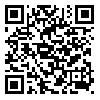Volume 19, Issue 74 (11-2019)
refahj 2019, 19(74): 287-324 |
Back to browse issues page
Download citation:
BibTeX | RIS | EndNote | Medlars | ProCite | Reference Manager | RefWorks
Send citation to:



BibTeX | RIS | EndNote | Medlars | ProCite | Reference Manager | RefWorks
Send citation to:
miri N, maddah M, raghfar H. (2019). Relationship Between Population Aging and Economic Growth of Iran’s Through Fertility and Life Expectancy (Overlapping Generation Model Approach). refahj. 19(74), 287-324.
URL: http://refahj.uswr.ac.ir/article-1-3211-en.html
URL: http://refahj.uswr.ac.ir/article-1-3211-en.html
Abstract: (6236 Views)
Introduction: The macro economy effects of population aging on economic growth was examined based on the effects of two factors including decrease in fertility rate and increase in life expectancy. The effects of population aging on economic growth in Iran and some of the macro economy variables were examined using a modified overlapping generation model (55 cycles).
Method: Simulations were performed in MATLAB for the two scenarios of decreasing fertility rate and increasing longevity and their effects on economic growth of Iran. The initiation year was 1994, and the model was calibrated using Iran economy data from 1994 to 2017. The forecasts were produced for the years after 2017 until 2050.
Findings: The results showed that the decline in the growth rate of birth rate had a notable effect on the decrease of the growth rate of real and gross national product (GNP) per capita. In addition, an increase in life expectancy or longevity did not have a negative effect on the growth rate of real GNP and increased GNP per capita.
Discussion: Assuming that fertility rate remains at replacement level, the country will face a serious challenge by the aging population by 2030, and the population over 65 will constitute 15% of the population by 2045. Fast and wide population changes have placed Iran among the countries that expect an aged population by the mid-21st century. The factors effective in the aging population in Iran include increase in life expectancy and decrease in fertility rate.
Method: Simulations were performed in MATLAB for the two scenarios of decreasing fertility rate and increasing longevity and their effects on economic growth of Iran. The initiation year was 1994, and the model was calibrated using Iran economy data from 1994 to 2017. The forecasts were produced for the years after 2017 until 2050.
Findings: The results showed that the decline in the growth rate of birth rate had a notable effect on the decrease of the growth rate of real and gross national product (GNP) per capita. In addition, an increase in life expectancy or longevity did not have a negative effect on the growth rate of real GNP and increased GNP per capita.
Discussion: Assuming that fertility rate remains at replacement level, the country will face a serious challenge by the aging population by 2030, and the population over 65 will constitute 15% of the population by 2045. Fast and wide population changes have placed Iran among the countries that expect an aged population by the mid-21st century. The factors effective in the aging population in Iran include increase in life expectancy and decrease in fertility rate.
Keywords: Aging, Birth Rate Growth, Economic Growth, Overlapping Generations Model (OLG), Life Expectancy
Type of Study: method |
Received: 2018/10/1 | Accepted: 2019/09/30 | Published: 2020/01/18
Received: 2018/10/1 | Accepted: 2019/09/30 | Published: 2020/01/18
Send email to the article author
| Rights and permissions | |
 |
This work is licensed under a Creative Commons Attribution-NonCommercial 4.0 International License. |







